Disclosure: This post contains affiliate links. If you click through and make a purchase, I may earn a small commission at no extra cost to you. Thank you for supporting Mythic Minis Studio! For more information read my full disclosure.
Introduction
Contrast paints have revolutionized miniature painting, making it faster and easier to achieve stunning results with minimal effort. Designed to flow into recesses while leaving raised areas lighter, contrast paints create natural shading and highlighting in a single coat. In this guide, we’ll walk you through the process of using contrast paints effectively to speed up your painting without sacrificing quality.
What Are Contrast Paints?
Contrast paints are specially formulated paints that work as both a basecoat and a shade in one step. They are semi-transparent and pool in the recesses, automatically creating depth and contrast. This makes them perfect for beginners or painters looking for a quick and effective way to get miniatures tabletop-ready.
Benefits of Contrast Paints:
- Fast Application – Cuts down painting time significantly.
- Built-in Shading and Highlights – No need for multiple layers.
- Great for Beginners – Easy to use and forgiving.
- Works Over Zenithal Priming – Enhances natural light effects.
How to Paint Miniatures with Contrast Paints
Step 1: Prime Your Miniature
For best results, use a light-colored primer such as:
- White – Creates the brightest, most vibrant contrast effect.
- Light Gray or Bone – Offers a more muted tone.
- Zenithal Prime (Black > Gray > White) – Enhances depth and shading naturally.
Spray or brush on your primer, ensuring an even coat with no pooled areas.
For more on priming, check out out posts:
Step 2: Apply Contrast Paints
- Load your brush with contrast paint and apply it generously over the surface.
- Let the paint flow into recesses but avoid excessive pooling.
- Work in sections to maintain an even finish.
- If a section gets too dark, use a damp brush to lift excess paint.
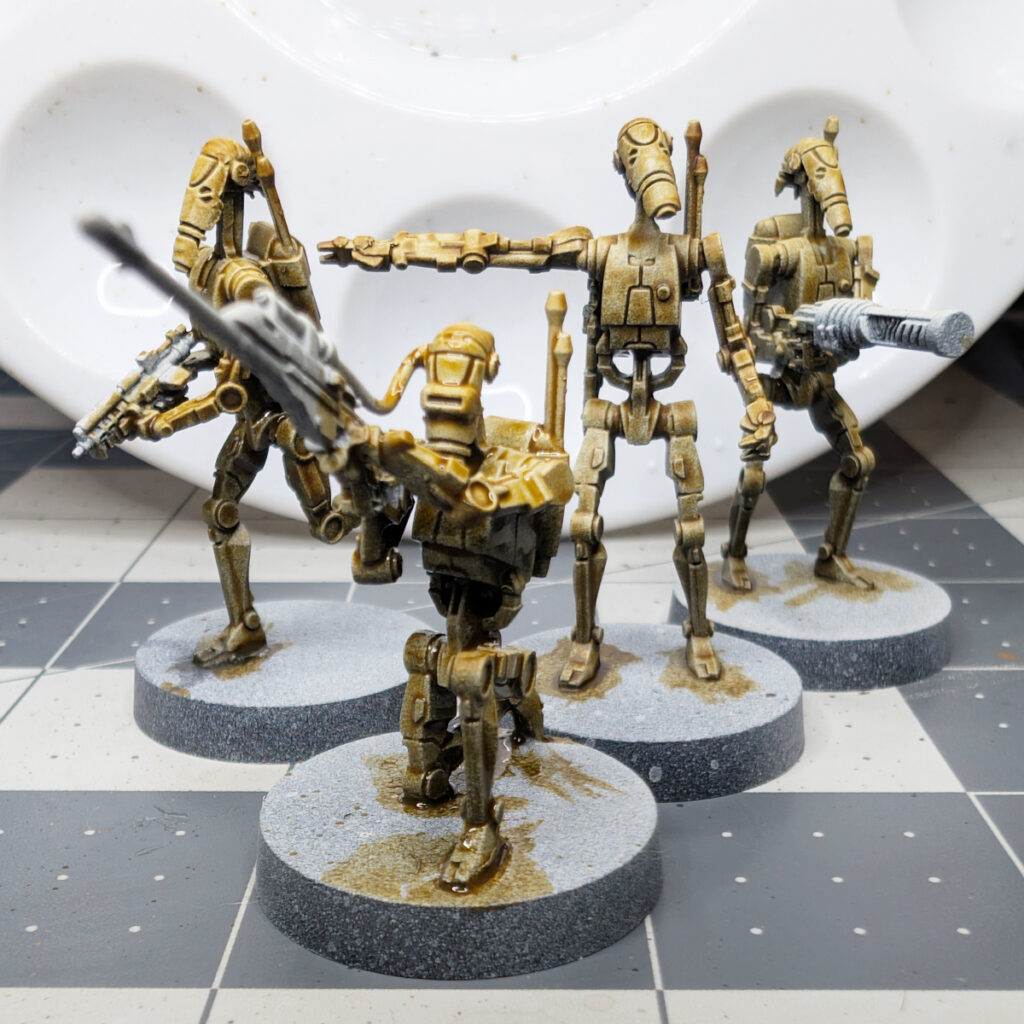
Here is an example of a primary base coat of Skeleton Horde painted over Zenithal primed B1 Battle Droids from Star Wars Legion. Of course, there are still steps to take before we call these models finished, but also we had to take a couple of steps to get to this point. Let’s take a look at some things we did to make our contrast paint settle just a little bit better.
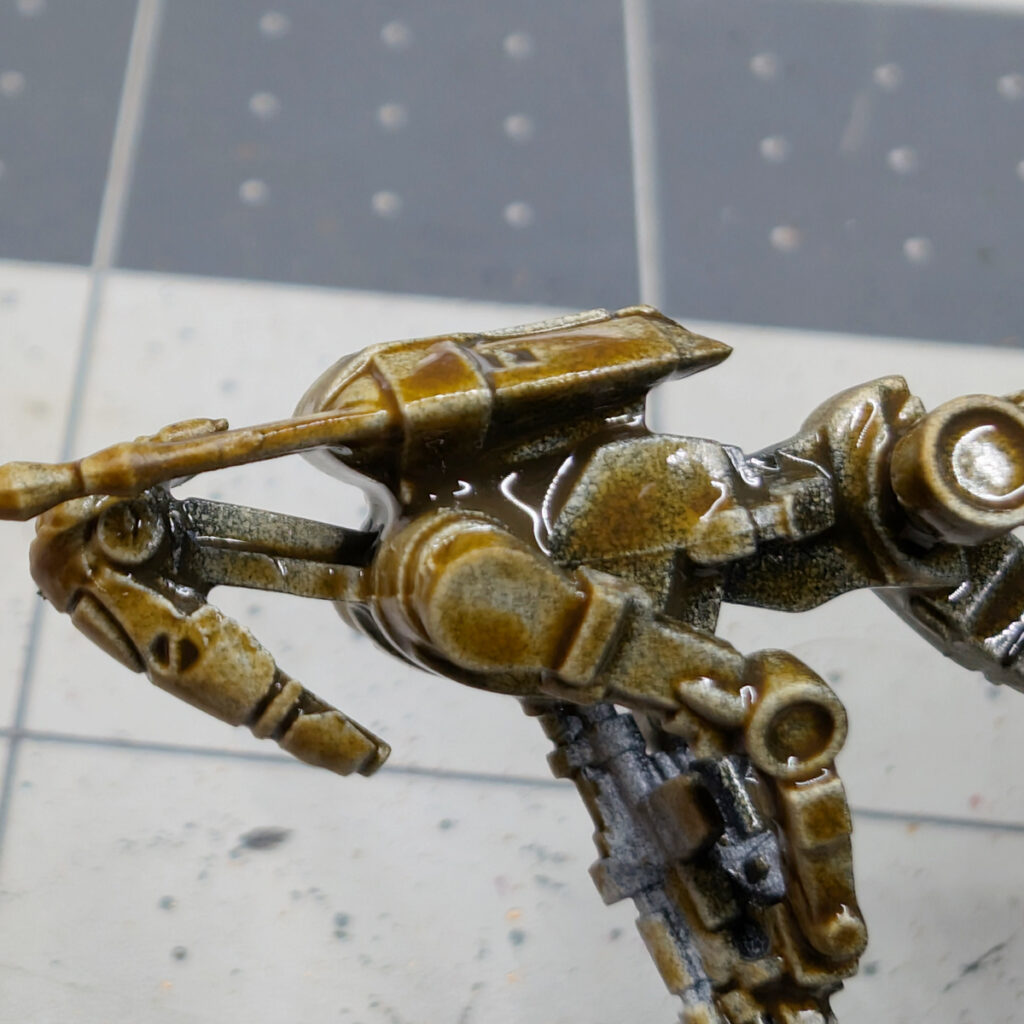
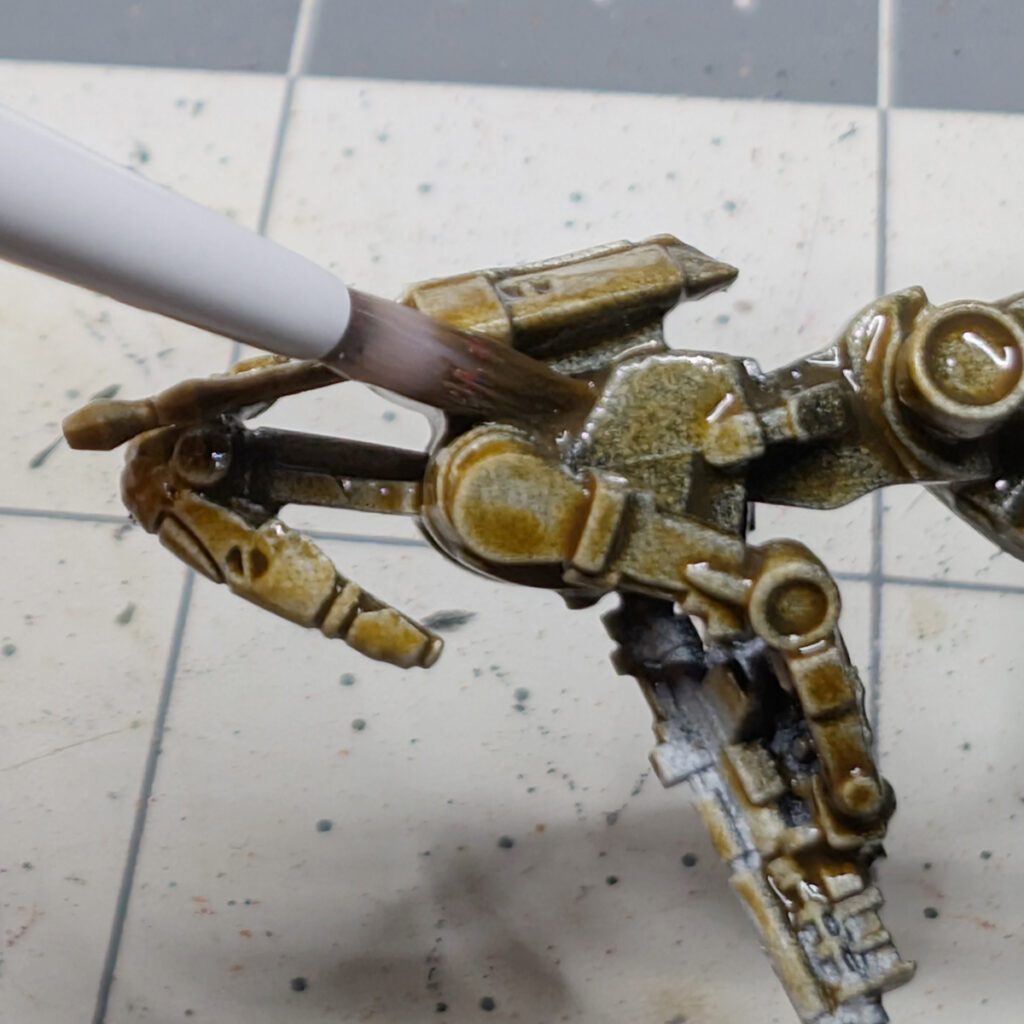
Above and left, you’ll see the contrast paint has pooled in that pocket between the droid’s backpack and body, just behind his shoulder. If we let this dry, we’re going to lose some detail with the model that will be replaced with a dark brown blobby mass of paint. It’s better to take care of this now than try to correct it when it’s dry. Simply use your brush to mop up the extra paint, and you can gently wipe off the access paint on a paper towel. Do this as much as you see fit on the model.
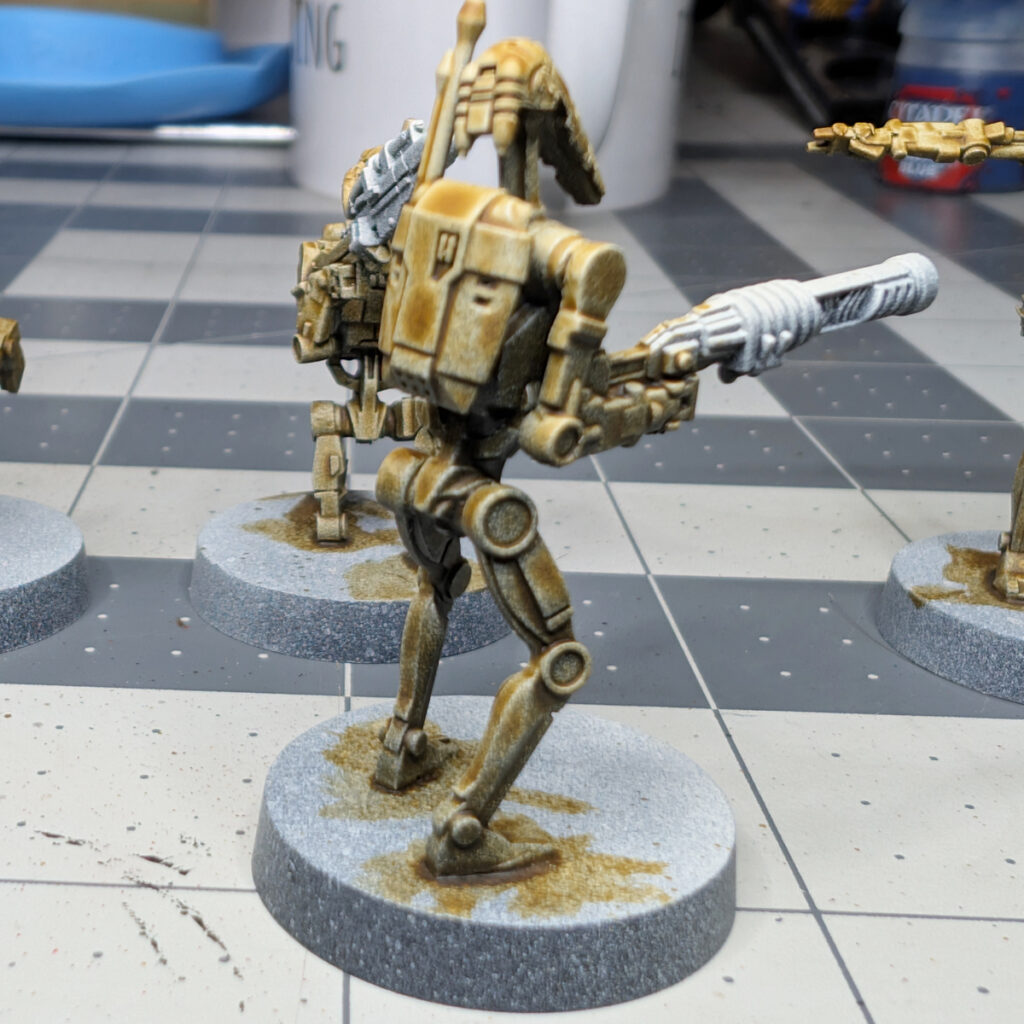
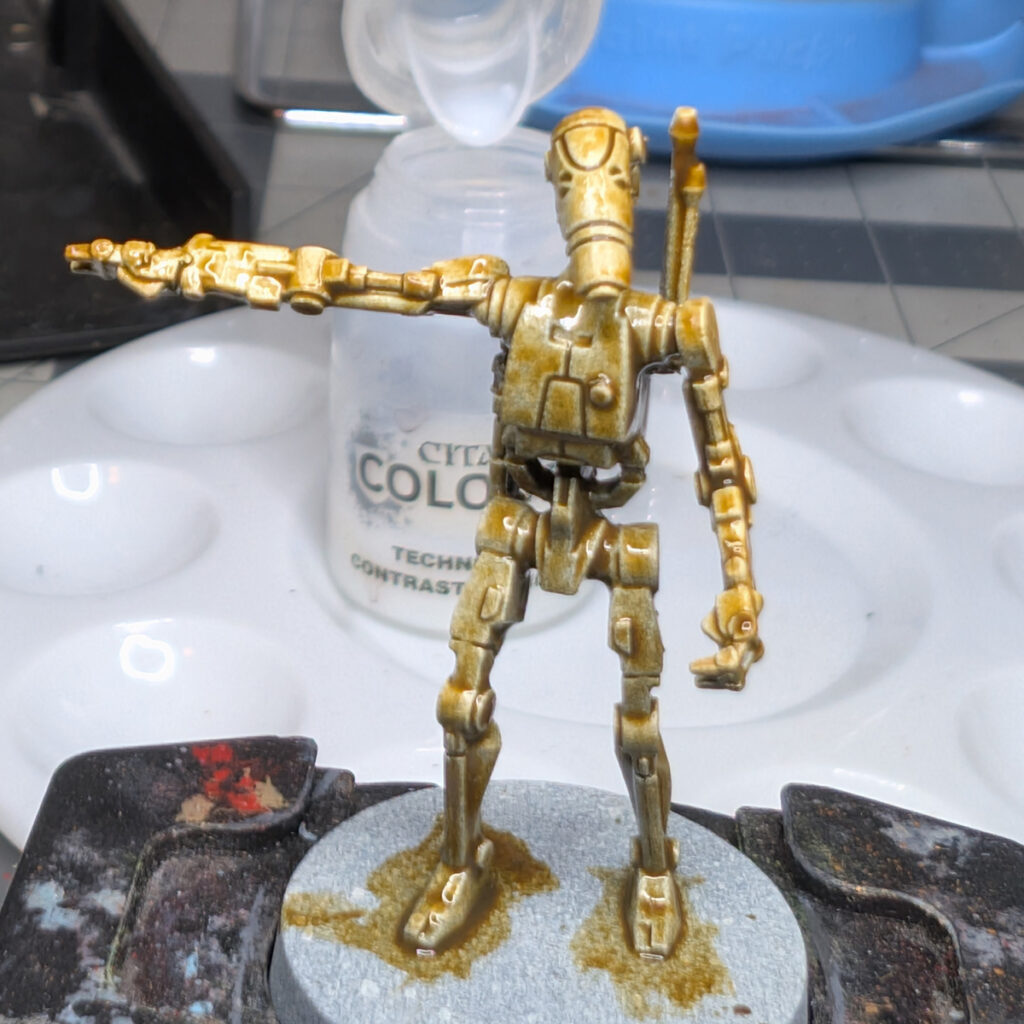
Above and left, you’ll see where contrast paint can often settle on the raised, flat surfaces instead of pooling down into recesses. This is pretty common behavior with contrast paints because it can be tricky to balance the amount of paint applied to the model. Not enough contrast paint results in a light tinting and doesn’t produce the base-shade-highlight effect the contrast paint is intended for, meanwhile, too much paint can result in pooling on areas we don’t want that excess. This is pretty simple to fix, but it takes a little patience and finesse.
Have a smaller brush handy, in this case I had an extra small layer brush that has lost its point. Dip the brush into Constrast Medium (basically colorless contrast paint), gently wipe off excess, and use your brush to move the contrast paint around where you would like it. Dipping the brush into contrast medium prevent the brush from being abrasive and virtually ripping the paint off of the surface of the model. Doing this can result in staining and rough textures where the paint has already started to dry. It can be very challenging to correct after this happens.
Step 3: Let It Dry Completely
Contrast paints take longer to dry than regular paints. Allow at least 30 minutes to an hour for drying before handling the miniature.
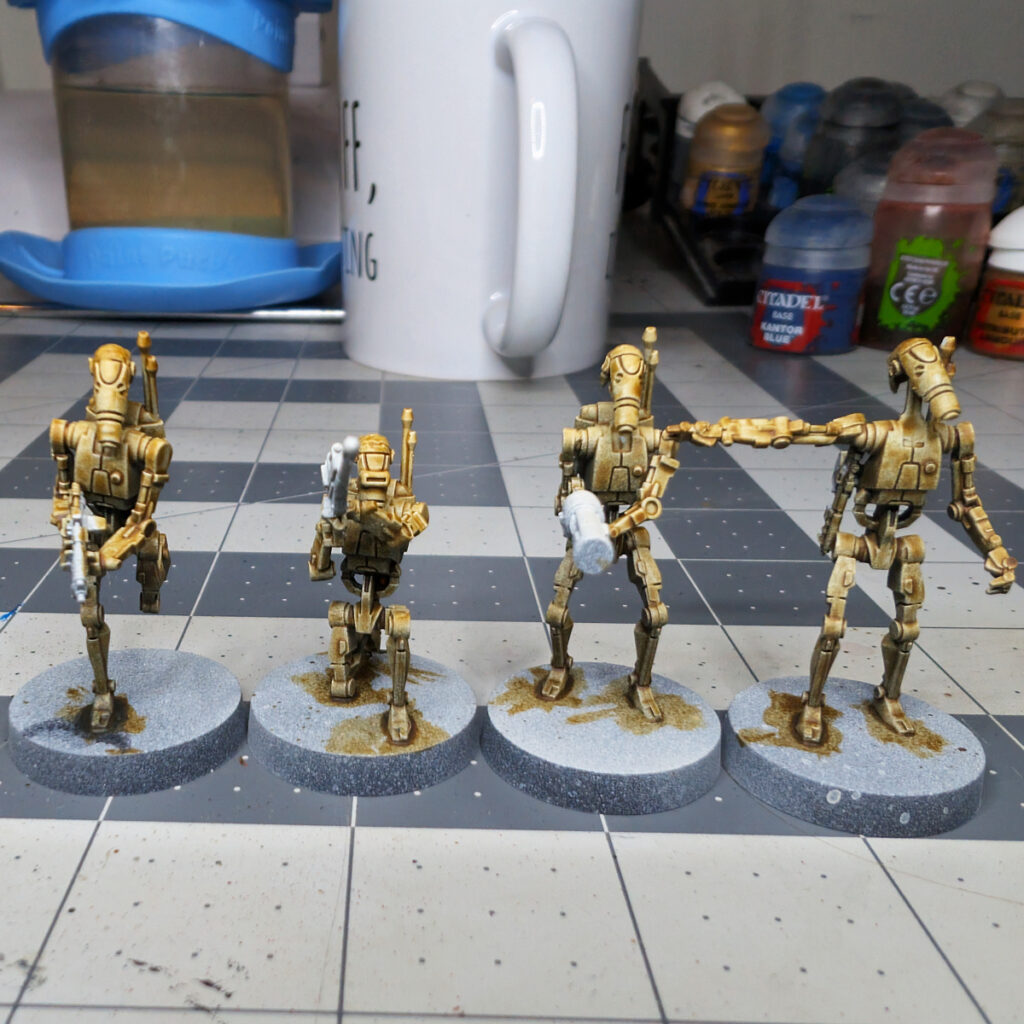
Here is our little group of unit-expansion B1 Battle Droids with a pretty good base coat of Skeleton Horde. Our Zenithal Prime job added a nice light to dark contrast for our translucent contrast paint. This is the basics of contrast painting, but we can push just a little bit more. In our next step, we’ll smooth this base coat out a little.
Step 4: Add Highlights and Touch-Ups (Optional)
- For extra depth, apply a lighter color on raised areas using dry brushing or edge highlighting.
- Tidy up any areas where contrast paint may have pooled too much.
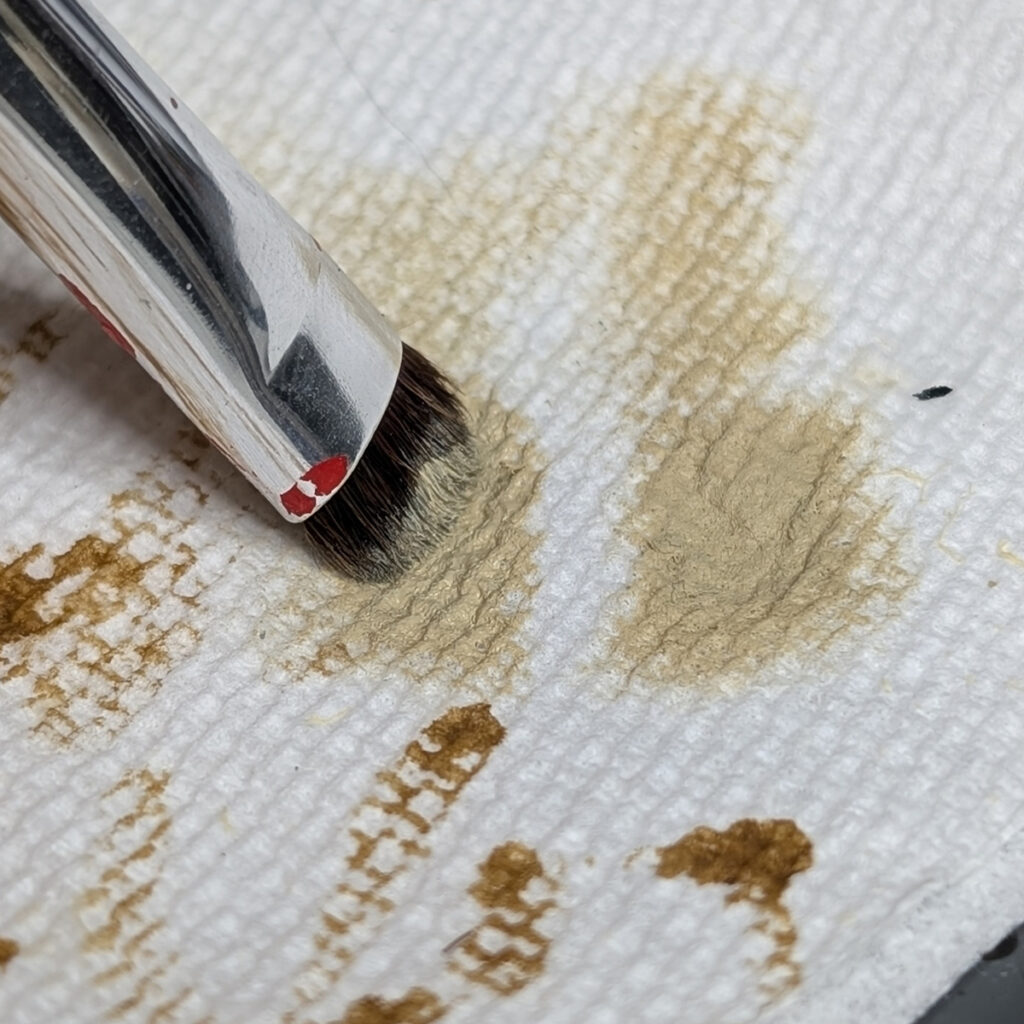

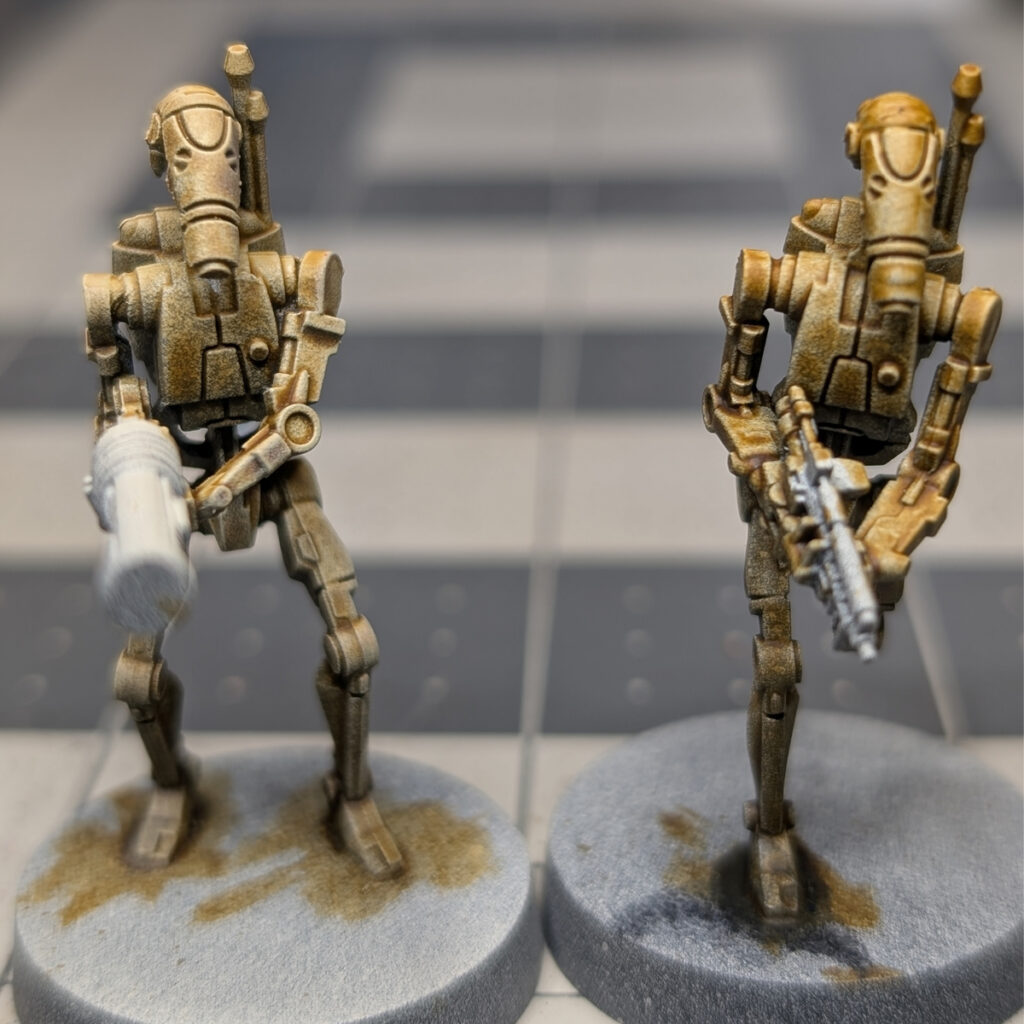
In image 1 (left) we’re wiping off as much excess paint as possible for dry-brushing. I’m using Ushabti Bone, but Zandri Dust or Karak Stone might also be preferred.
For a guide on dry-brushing, check out our guide How to Dry-brush Miniatures: A Simple Technique for Stunning Highlights
Image 2 (center) I’m using strictly a downward motion with the dry-brush, very lightly to see how the paint is going to behave. This method is an excellent way for beginner painters to begin to understand light sourcing on your model. Remember the zenithal prime is light to dark from top to bottom. This means your light source comes from above. Subsequently, this means you’ll want to have brighter color toward the top and darker color toward the bottom – so dry-brush downward to stay uniform with your light sourcing.
Image 3 (right) is a side by side comparison of a model that has been dry-brushed with Ushabti Bone and one that still has just the Skeleton Horde Contrast Paint. The color blend is just a little bit smoother, and the light and dark contrast on the model features is more developed (look at the legs and knees).
Best Uses for Contrast Paints
- Speed Painting Armies – Perfect for batch painting large groups quickly.
- Organic Textures – Ideal for skin, fur, and cloth due to their natural shading.
- Washes & Glazes – Can be thinned and layered for added effects.
Final Thoughts
Contrast paints are a fantastic tool for both beginners and experienced painters looking to speed up the process while still achieving high-quality results. Whether you’re painting a full army or a single character, this method will help you get miniatures on the table faster without sacrificing detail. Give it a try and see how contrast paints can transform your painting workflow!

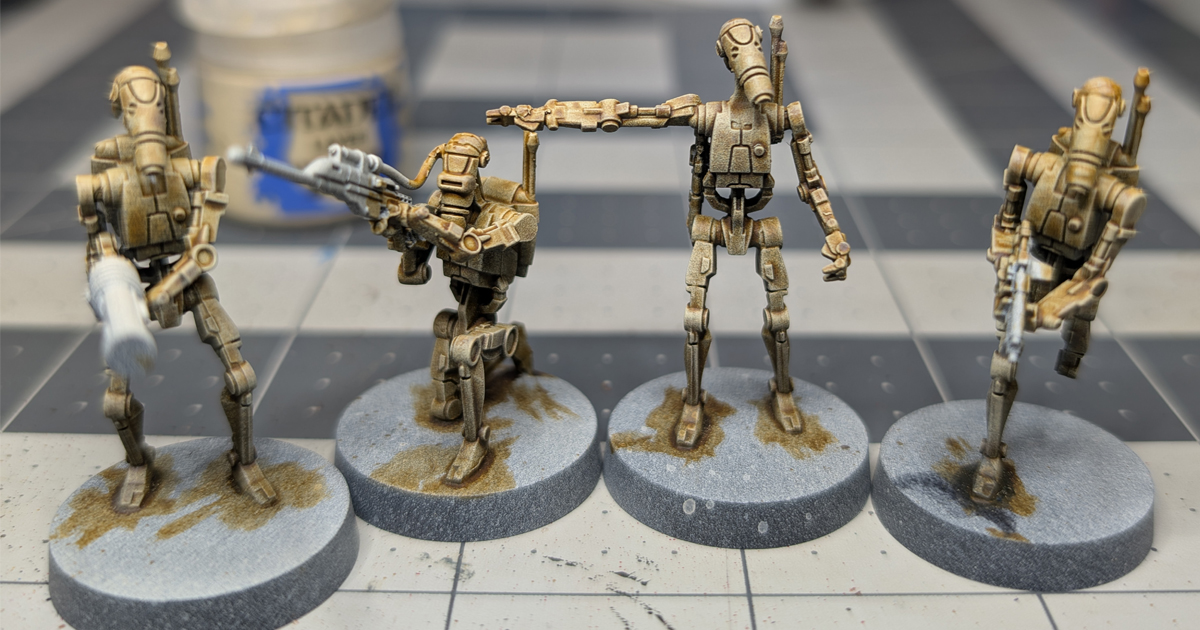
No responses yet